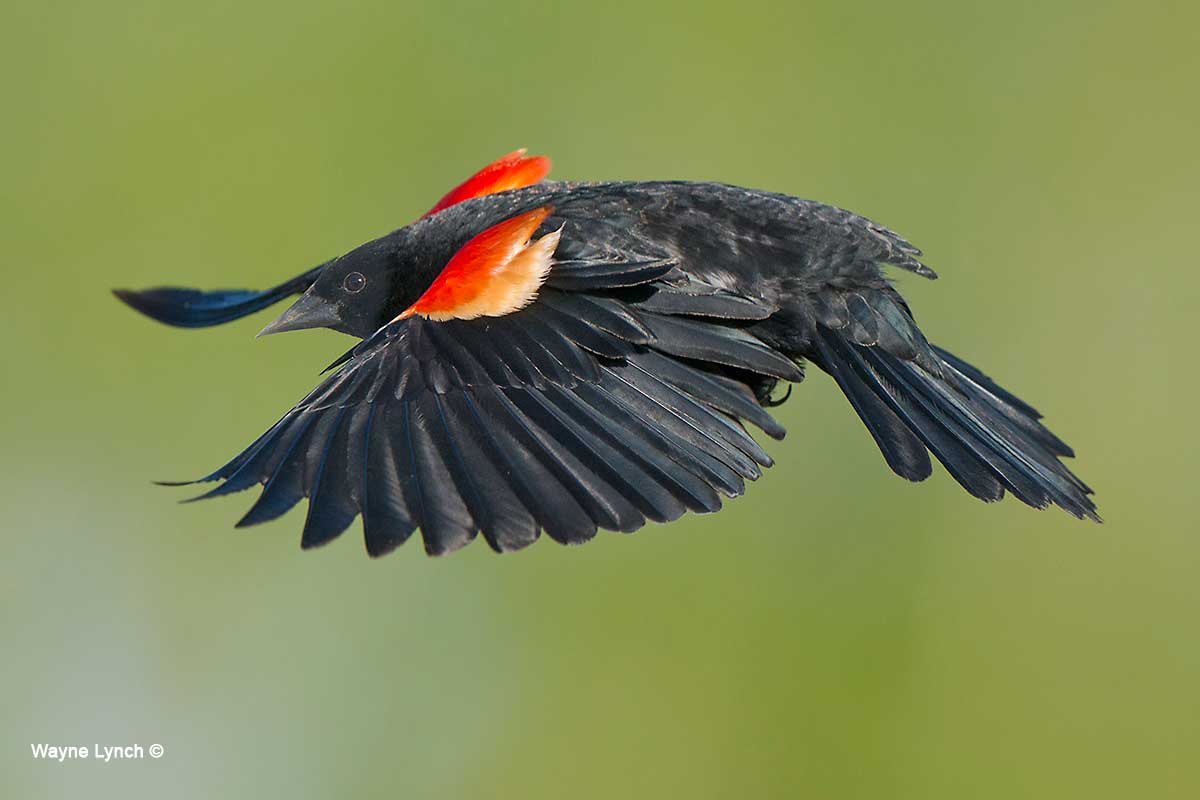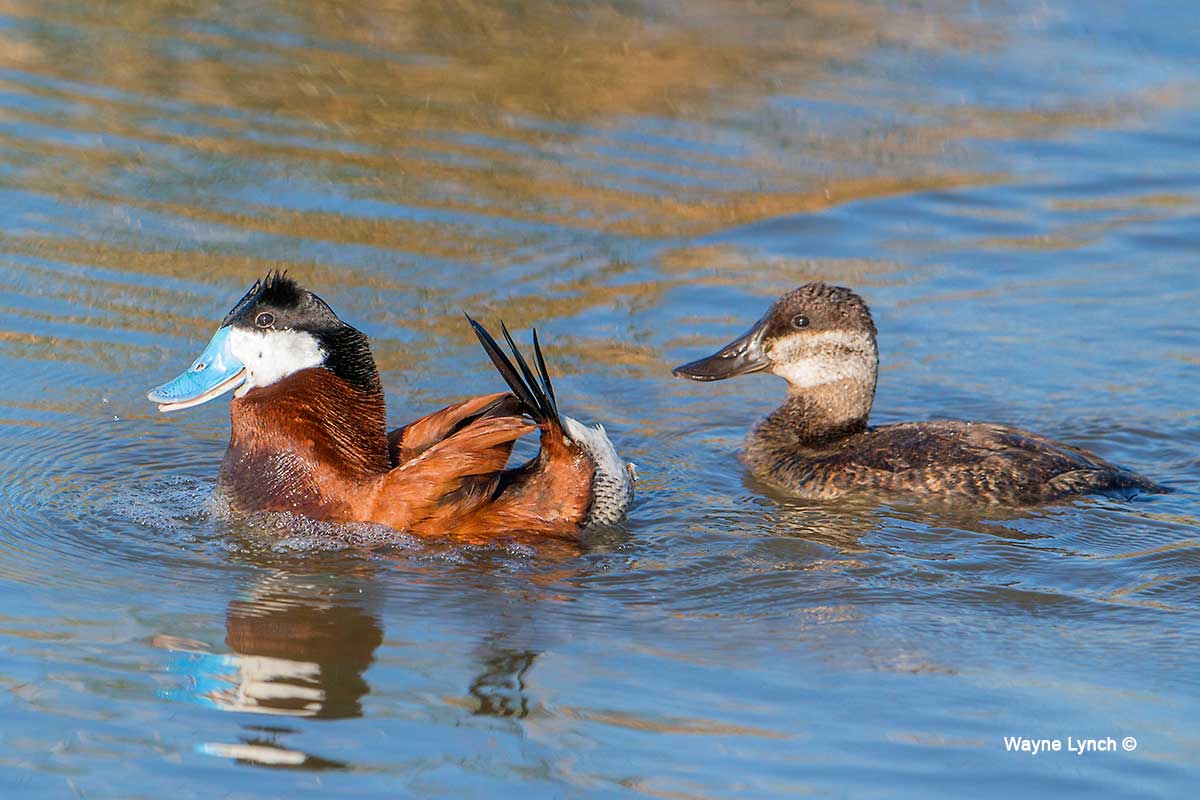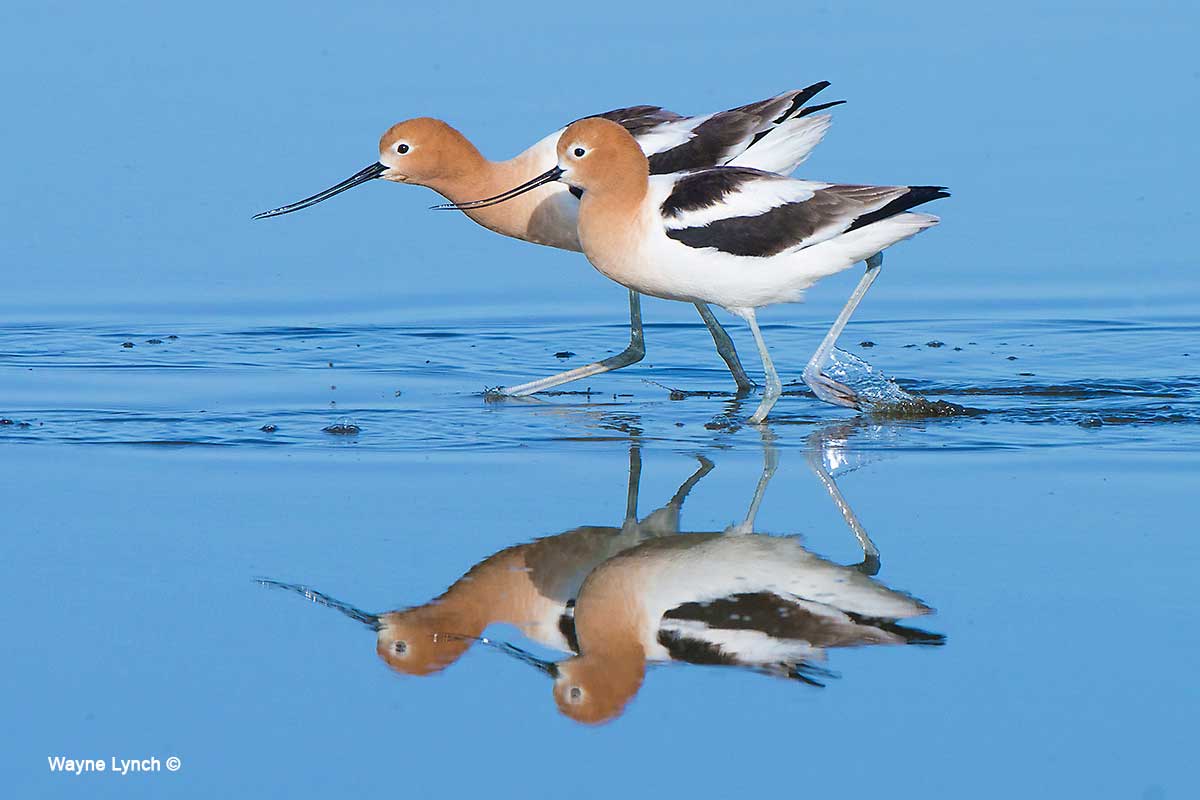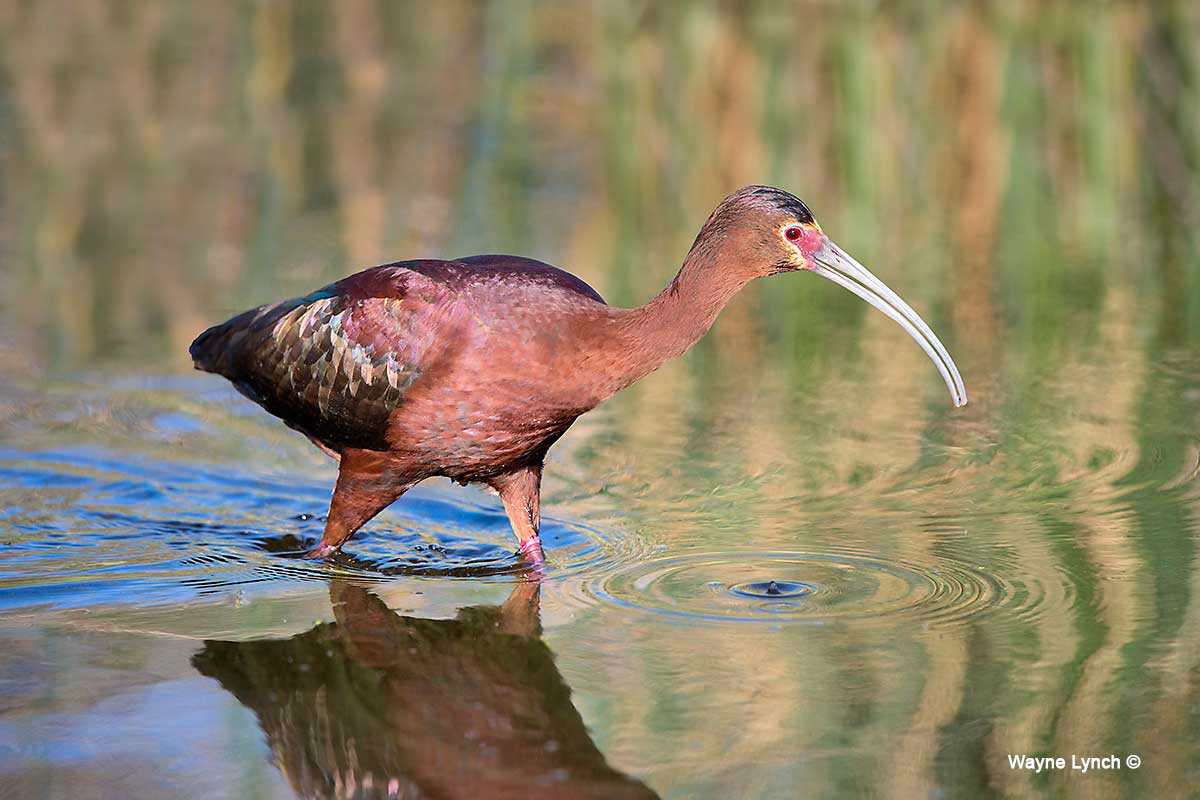
SPRINGTIME in a PRAIRIE SLOUGH
by Dr. Wayne Lynch
June, 12, 2017

Etzikom Slough Prairie, Alberta
In northern Scandinavia, the Sami reindeer herders have a deep-rooted belief about the restorative powers of nature. They say: “If ever you are lost in life, put your ear to the earth and listen to the beat of her heart.” For me, the vibrancy of a prairie slough has always been the springtime heartbeat that revives my soul and buoys my spirit. I remember countless days when the cattails danced with the wind and the rustle of bulrushes mixed with the energetic trill of marsh wrens and the imploring calls of red-winged blackbirds. Innumerable times I waded through the shallows on adventures of discovery and found nothing more than peace and serenity.

Red -winged Blackbird

Black-necked Stilt

Black-necked Stilts
The origins of prairie sloughs began roughly fifteen to eighteen thousand years ago at the peak of the last glaciation. At the time, a massive ice sheet covered much of Canada and extended into the northern United States. In the ensuing millennia the ice sheet melted and retreated north, leaving behind a scoured rolling landscape filled with millions of natural depressions. Later when these depressions filled with rainwater they became wetlands known locally as sloughs (pronounced SLEWS), or potholes.

Red-winged Blackbird

Common Yellowthroat eating a Dragonfly
Sloughs are different than small lakes and ponds. They have no streams draining into or out of them, and they receive all of their water as runoff in spring. Many sloughs dry up in summer, and in the driest regions of the prairies a third of them disappear by mid-July. Even though many sloughs are shallow and transient, they are often more productive of wildlife than the permanent lakes found farther north in the boreal forest and in the arctic. Sloughs are such a magnet to wildlife because of the richness of their waters. Evaporation due to the warm summer temperatures and desiccating winds of the prairies concentrates the nutrients that get washed into sloughs. The resulting high fertility encourages the growth of innumerable invertebrates such as crustaceans, snails, worms, and insects as well as algae, duckweeds, pondweeds, cattails and bulrushes all of which nourish the wildlife. In contrast, the lakes of the boreal forest and arctic are frequently acidic and commonly produce only a tenth as many invertebrates per volume of water as do prairie sloughs.

Forster's Tern

Courting Ruddy Ducks

Male Northern Harrier

Left: Northern Harrier Nest Right: Marsh Wren
Sloughs differ in appearance. Some sloughs are ringed with bulrushes and cattails, others have a perimeter of willows and aspens; some have a "bath tub" ring of white alkali salt with an outer ring of snowberry and rose bushes, and still others have only grasses and sedges surrounding them. Sloughs can be large or small in area, although the average size is 0.5 hectares (1.2 acres), and deep or shallow, but those with less than 40 centimetres (16 in.) of water are generally dry by midsummer.

Marsh Wren

Marbled Godwit

Marbled Godwit



Above American Avocet
Fifty years ago, biologist Lyle Sowls recognized the prairie pothole region of North America as the “duck factory” of the continent. He calculated that more than half of all the ducklings that hatch in North America each spring start life on a prairie slough. Later researchers determined that for some duck species sloughs were even more vital to their survival. Over two-thirds of all mallards, northern pintails, canvasbacks and northern shovellers breed in prairie potholes and an overwhelming 85 to 90 per cent of all gadwalls, redheads and ruddy ducks do the same.
Naturally, wetlands that are good for raising ducks are also good for many other species of waterbirds. Two of the most elegant birds in the prairies, the black-necked stilt and the American avocet, are common residents of many prairie sloughs. These two long-legged beauties wade through the shallows searching the water surface for microscopic invertebrates. Both are so called shorebirds and they share the slough with others in this group such as marbled godwits, willets, killdeers, and Wilson’s phalaropes.



Above Pictures: White-faced Ibises
The thick emergent vegetation in the shallow water of many sloughs offers nesting sites for a whole array of other prairie birds including marsh wrens, red-winged and yellow-headed blackbirds, Forster’s terns, Franklin’s gulls, white-faced ibis, and northern harriers. With such a rich avian fauna, it’s little wonder that prairie sloughs are such a delight for nature photographers and birdwatchers to explore.
(Text adapted from an article by the author “Slough of Delight” Canadian Wildlife Magazine, November/December 2008.)
Authors Biography & Contact Information
 Bio: Dr. Lynch is a popular guest lecturer and an award-winning science writer. His books cover a wide range of subjects, including: the biology and behaviour of owls, penguins and northern bears; arctic, boreal and grassland ecology; and the lives of prairie birds and mountain wildlife. He is a fellow of the internationally recognized Explorers Club - a select group of scientists, eminent explorers and distinguished persons, noteworthy for their contributions to world knowledge and exploration. He is also an elected Fellow of the prestigious Arctic Institute of North America.
Bio: Dr. Lynch is a popular guest lecturer and an award-winning science writer. His books cover a wide range of subjects, including: the biology and behaviour of owls, penguins and northern bears; arctic, boreal and grassland ecology; and the lives of prairie birds and mountain wildlife. He is a fellow of the internationally recognized Explorers Club - a select group of scientists, eminent explorers and distinguished persons, noteworthy for their contributions to world knowledge and exploration. He is also an elected Fellow of the prestigious Arctic Institute of North America.
Dr. Wayne Lynch
3779 Springbank Drive S. W.
Calgary, AB, T3H J5
E-mail: lynchandlang@shaw.ca
Website: www.waynelynch.ca
Read previous articles by Dr. Wayne Lynch
The Blind Photographer by Dr. Wayne Lynch
Manatee Madness by Dr. Wayne Lynch
Going After Gators by Dr. Wayne Lynch
Oomingmak - The Bearded One -by Dr. Wayne Lynch
Art from the Afterlife by Dr. Wayne Lynch
Drummer Boys by Dr. Wayne Lynch
Bella Coola Eagles by Dr. Wayne Lynch
Click on the buttons below and share this site with your friends